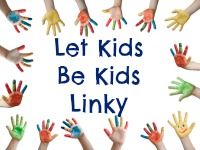In the years BC (Before Children) I worked with school children in their school grounds. I used to do a large number of nature based games and activities and I would love to share these with you now. Over the next few weeks I'll add some of my favourites onto the blog so you and your children can have the fun that the thousands of children I worked with over they years also had. Today I am offering you:
Nature's Treasure Hunt
Copy and print the list below, give your children a small box or bag and send them out on a
Treasure Hunt with a difference. Tell them that whilst they may be able to find some things easily (a feather for example) other things maybe somewhat harder. After all there are not many dinosaurs to be had these days! This is where their imagination comes into play. They need to find something that makes them think about a dinosaur ... I think you may be quite surprised at their ingenuity and lateral thinking. Ask your children to only collect only
natural things that you can return safely and without damage. Let them be as imaginative as possible but set any ground rules you might want i.e. do not cut ALL the flowers in the garden!
For younger children you can make the list shorter or adapt some of the items and work with them to read the list and search for things.
Give your children enough time to find a good number from the list and at the end sit down and go through their finds with them. You could then use them as the basis for a nature table or return them back to Nature.
Nature's Treasure Hunt - The List.
 |
| A Sycamore leaf ... or is it a dinosaur's footprint? |
 |
| Is grass important in Nature? |
1. A feather
2. One seed dispersed by the wind
3. Exactly 50 of something
4. A sycamore leaf
5. A thorn
6. Three different kinds of seed
7. A dinosaur
8. Something round
9. Something fuzzy
10. Something beginning with the letter M
11. A chewed leaf (not by you!)
12. Something beautiful
13. A rainbow
14. Something white
15. A badger
16. Something that makes a noise
17. Something important in nature
18. Something dead
19. Something very old
20. Something totally straight
21. A sun trap *
22. A fairy
23. Fire
24. A blue flower
25. A cloud
26. A big smile
* - this is a leaf that traps the energy from the sun to make food for the plant ;)
Do let me know if you do this and whether your children came up with any very interesting or particularly imaginative finds. Happy Searching!

























